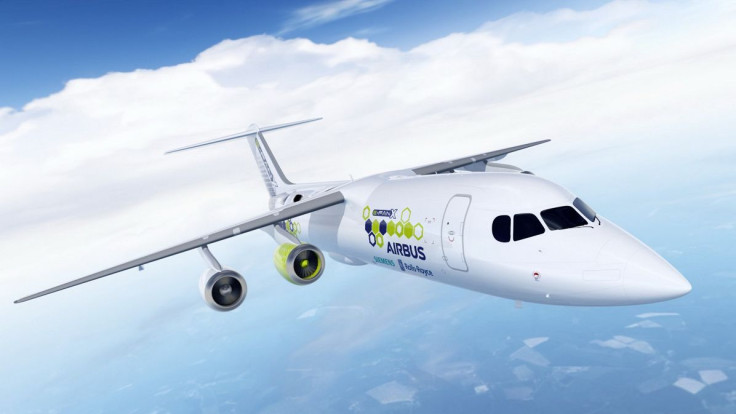Airbus, Rolls-Royce, Siemens Partner For Electric Airplane Development By 2020

Several European aircraft manufacturers are teaming up to build the first hybrid electric test plane.
Airbus, Rolls-Royce and Siemens have come together to form a new partnership, which they hope will help develop a near-term flight demonstrator that will be a significant step forward in hybrid-electric motor system to propel a commercial aircraft, they announced Tuesday.
The companies said the project, called E-Fan X, will be based on a modified 100-seat British Aerospace 146 (BAe146) regional aircraft.
The team is looking to modify the four engines of the test BAe 146 aircraft. To begin with, they will replace one of the four engines with a two megawatt electric motor. Provisions will be made to replace a second gas turbine with an electric motor once the first system's test run is deemed a success.
The trio believes it could lay the groundwork for commercial flights with the same electric technology as early as 2020, according to an official tweet by Rolls Royce.
We’ve teamed up with @Airbus and @Siemens to fly a hybrid-electric aircraft by 2020 #EFanX #ElectricAviation https://t.co/TsjxUBkArv pic.twitter.com/j0mQjtgKfy
— Rolls-Royce (@RollsRoyce) November 28, 2017
“The E-Fan X is an important next step in our goal of making electric flight a reality in the foreseeable future. The lessons we learned from a long history of electric flight demonstrators, starting with the Cri-Cri, including the e-Genius, E-Star, and culminating most recently with the E-Fan 1.2, as well as the fruits of the E-Aircraft Systems House collaboration with Siemens, will pave the way to a hybrid single-aisle commercial aircraft that is safe, efficient, and cost-effective,” said Paul Eremenko, Airbus’ Chief Technology Officer in a release on Airbus website.
“We see hybrid-electric propulsion as a compelling technology for the future of aviation,” he added.
The steps of the program have been divided among the three companies, with each company overlooking production, design or testing.
Airbus will be responsible for making sure the four engines are integrated with flight controls. Rolls-Royce will develop the turbo-shaft engine, two megawatt generator and power electronics, while Siemens will deliver the power distribution network, said the report. An electronic future for aviation is looking more like a reality with several firms vying to make the breakthrough flight that will change the way the industry functions.
Along with these three companies, there are several smaller players who are researching this technology for aircrafts.
EasyJet, a major European carrier, announced in September it is working with the United States startup Wright Electric to build an all-electric airliner. Boeing and BlueJet have entered the fray too, partnering with a Seattle-based startup Zunum to develop a commuter electric aircraft. They estimated their aircraft could be up and running by 2022.
Both these projects/ collaborations are ambitious in their vision. They have large scale productions in mind and will face some major hurdles to get up and running without the experience and expertise of established players like Airbus, Rolls-Royce and Siemens, said a CNN Tech report.
Airplane companies’ major expenditure is fuel. Here, they face a crunch to get the aviation industry ready for the upcoming electronic personal and commercial transport revolution, ushered in by Elon Musk of Tesla.
Recent climate conventions in Geneva and Paris have set goals for countries and companies, which the aviation industry is keen on meeting. European Commission’s Flightpath 2050 Vision for Aviation is the reduction of CO2 emissions by 75 percent, reduction of NOx emissions by 90 percent and noise reduction by 65 percent.
These cannot be achieved with the technologies that exist today. Therefore, Airbus, Rolls-Royce and Siemens are looking at all the other possible areas to exploit and reduce the strain on depleting fossil fuels. Electric and hybrid-electric propulsion are seen today as among the most promising technologies for addressing these challenges.
© Copyright IBTimes 2025. All rights reserved.



















